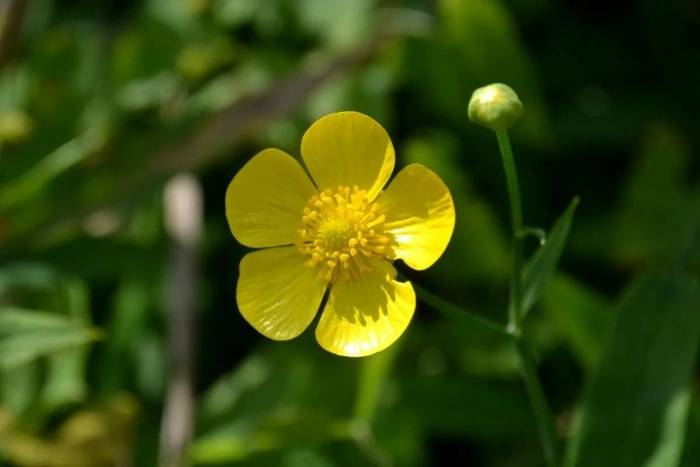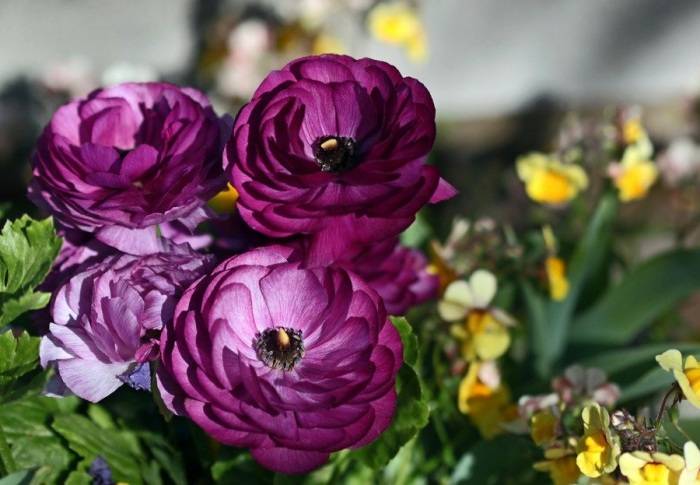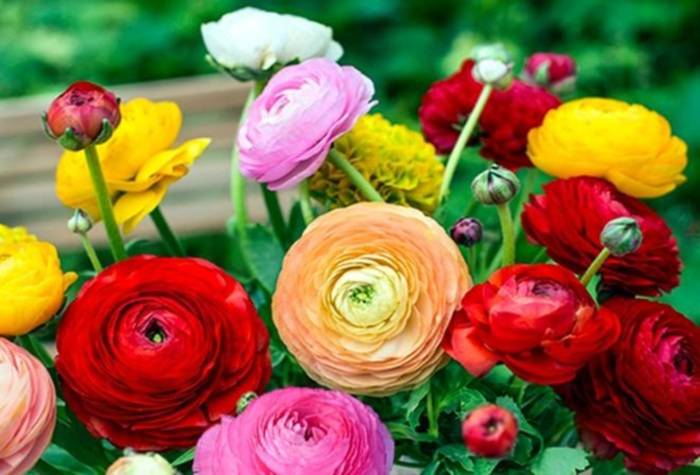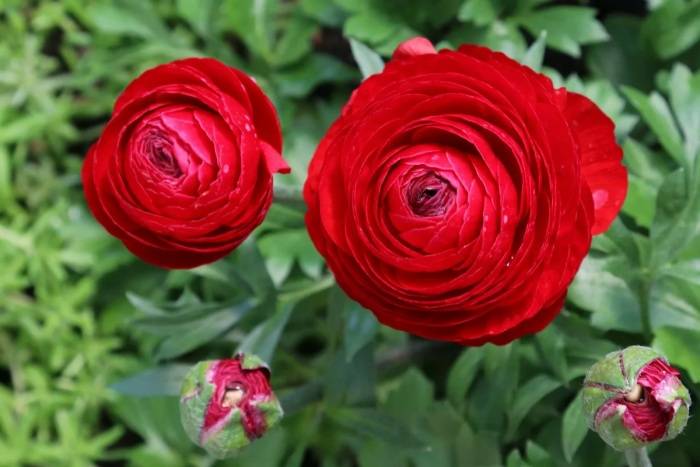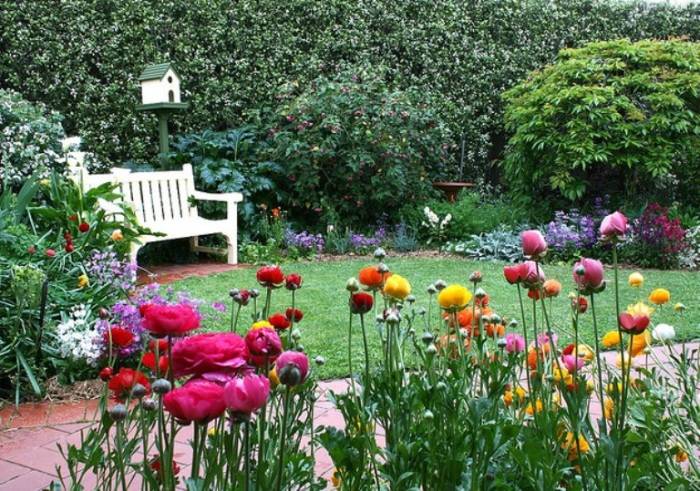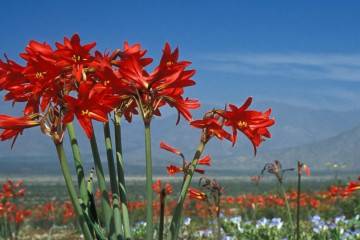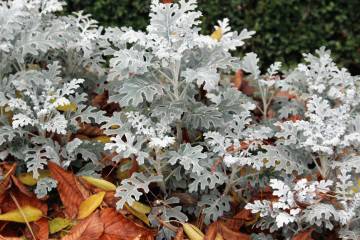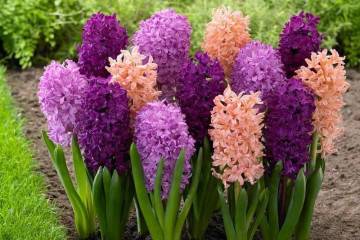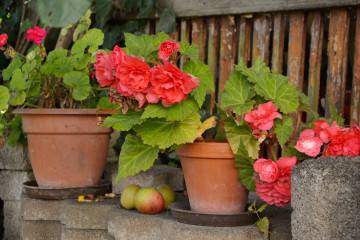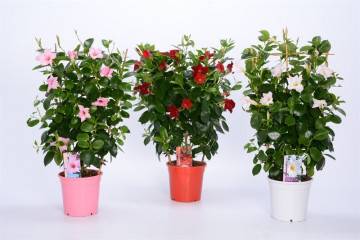Ranunculus flowers - growing at home
Content:
- What does ranunculus look like, or a garden buttercup
- Classification of ranunculus species
- The cultivars that are most popular with horticulturists
- How ranunculus reproduces
- Features of care in the garden
- When and how it blooms
- Collection and storage of bulbs
- Possible growing problems
- Use in landscape design
The beautiful ranunculus flower captivated the whole world with its beauty. It can be grown as a garden or indoor plant. Caring for him is not too difficult, and he will delight with flowering all summer.
What does ranunculus look like, or a garden buttercup
Looking at the ranunculus, it is difficult to believe that it is the closest relative of the common field buttercup. Breeders have bred a wide variety of colors and shapes of flowers of this plant.
What family does it belong to
Ranunculus belongs to the family of the same name Ranunculaceae (Buttercup). There are annual and perennial subspecies. Ranunculus is a garden buttercup, significantly different from the wild ancestor in appearance. The name comes from the Latin word "Rana", which means "frog".
In the wild, it grows in Iran, Turkey and Syria, from where it was introduced to Europe. The first description was given in his writings by the philosopher Pliny. In the XVI century. ranunculus was very popular in Europe but was forgotten by the next century. The second coming of the buttercup to Europe took place in the 19th century. thanks to the Scottish botanist D. Lyall.
Buttercup (ranunculus) is a herbaceous plant up to 1 m high. It has glossy dark green rounded leaves. The flowering period is late May - early June. Wild white ranunculus up to 8 cm in diameter has yellow stamens.
Most often, ranunculus is planted in the garden, but the decorative buttercup is also suitable for growing in a pot at home.
Classification of ranunculus species
Experts classify ranunculus into the following groups according to the shape of the corolla.
Asiatic buttercup is the basis for all other hybrid varieties. Its flower petals can be white, yellow, red, pink or orange. Two-color varieties have also been bred. Asian ranunculus is a flower similar in appearance to a rose, peony, dahlia, or spherical chrysanthemum. The height rarely exceeds 50-60 cm. The root is in the form of a tuber. Leaves and stem can be lightly edged.
Persian ranunculus have simple or semi-double medium-sized flowers located on low peduncles.
In the French group, the petals are arranged in two rows, that is, a semi-double flower.
African buttercups have the most terry spherical flowers. They resemble a turban - a traditional oriental headdress. Hence the second name of the variety group - turban buttercups.
The cultivars that are most popular with horticulturists
Of the whole variety of cultivated buttercup varieties bred by breeders, three are the most popular.
Bloomingdale
A low-growing perennial up to 25 cm high. At the same time, the diameter of a flower can be 10 cm. The flowers are densely double in shape, most of all like a rose of various colors. This variety can be grown both in the garden and at home in a pot. Perfect for cutting and creating bouquets, as it can stand for a long time in a vase without fading.
Color carnival
Color carnival, which is how the name of this variety is translated into Russian, has white, yellow, red and purple flowers. Corolla diameter up to 5 cm.The plant itself grows up to 50 cm.
Superbissima
Superbissima has semi-double flowers of all kinds of colors. There are also varieties with two-colored corollas. Superbissima is a large and tall variety. In this cultivar group, red or white flowers are most often found.
How ranunculus reproduces
For a ranunculus flower, planting and care is not supposed to be too difficult. The garden buttercup reproduces both by seeds and tubers.
Growing from seeds
It is better to buy seed from trusted sellers, otherwise there is a danger of purchasing something that was not needed. You can also collect from your ranunculus, but this is a laborious process and it is difficult to achieve a positive result, since the seeds quickly lose their germination.
In warm regions, buttercup can be sown directly into open ground. But most often, seedlings are first grown at home, which are then transplanted into a flower bed. The best time for sowing is the end of winter or the very beginning of spring. Before this, the seeds can be soaked in a stimulant solution.
The most suitable substrate is the following mixture: two parts of leaf and peat soil and 1 part of sand. Seeds should be spread out on the soil surface and sprinkled with a thin layer of soil. Then you need to cover with foil or glass. The best temperature for germination is 11-12 ° C.
Young ranunculus will appear in 2-3 days. Planting in separate pots is carried out in the phase of 4-5 true leaves. Until this moment, the container with seedlings should be in a well-lit place with a temperature of 20 ° C. With a lack of sunlight, the plant must be supplemented with special lamps. Buttercup has no special requirements for capacity.
Seedlings are planted in open ground after the threat of frost has passed, that is, in the 2nd half of May. A landing site is chosen protected from drafts, in the sun or in partial shade. The soil should be light, permeable to air and water, neutral or slightly acidic. The minimum distance of the planting holes from each other is 15 cm. The seedling is transferred together with an earthen lump or peat pot.
Buttercups grown from seeds will bloom in the second year.
Planting bulbs
Ranunculus are flowers that reproduce well with tubers. For a novice gardener, there are some recommendations on how to plant buttercups with roots.
For planting, rhizomes are selected without signs of disease or damage by pests. Just in case, before planting, the tuber is lowered for 30-40 minutes. in a weak solution of potassium permanganate. Then the rhizome is wrapped with a damp natural cloth (preferably gauze) for 2 hours. The dried gauze is changed and the tuber is left wrapped overnight in a cool place.Then ranunculus tubers are planted in shallow holes (5-7 cm in diameter) with a drainage layer at a distance of 15-20 cm from each other.
Features of care in the garden
Buttercup is easy to care for, even a novice florist can handle it, but the following rules must be observed:
- Buttercups love light, breathable soil types without stagnant water. The acidity of the soil should be in the range of 5.5-6.5 pH;
- complete drying out of the soil should not be allowed. But the buttercup is also afraid of excessive watering, as the roots can rot. Watering frequency for normal summer is 2-3 times a week;
- for good flowering, the buttercup needs to be fed twice a month;
- ranunculus constantly require aeration of the root system, so the soil will have to be loosened at least once a week. To prevent the soil from drying out, you can mulch the soil with straw, but without fanaticism, so as not to block the access of air to the roots.
When and how it blooms
Flowers in garden buttercups are very diverse in color and shape: simple, semi-double and double. The flowering season of cultivated buttercups begins later than that of wild ranunculus - at the end of June. Buttercups will bloom for a month.
During flowering, you need to constantly remove dried flowers so that new buds form. During this period, the plant needs to be fed with potassium-phosphorus fertilizer.
Collection and storage of bulbs
Rhizomes are dug out after the leaves of the ranunculus have dried. They do this very carefully, because the tubers are fragile. To dry out the rhizomes, they are left for 3 days in a dry, cool and dark room. Store dried bulbs at a temperature not exceeding 6 ° C, after wrapping them in moss, paper or natural fabric.
Possible growing problems
Of the pests for ranunculus, the most dangerous are nematodes, spider mites, thrips and aphids. To combat them, insecticides are used.
Buttercup is often affected by powdery mildew. This disease is well treated by spraying with fungicides such as phytosporin and fast.
If the buttercup drops buds or a whitish bloom appears on the leaves, then this is a signal to reduce watering. Also, the buds fall off if the plant is frozen.
Use in landscape design
The beauty of buttercups makes them indispensable in garden design. Their bright flowers look spectacular in any flower bed. They are especially well set off by the emerald-green needles of junipers or dwarf thujas. Buttercups can also be planted in free-standing flowerpots.
Often ranunculus of different colors are used to create a monoclumba. These plants form a dense variegated carpet. White and yellow simple and semi-double buttercups look great in rock gardens.
Thus, ranunculus are flowers that are perfect for growing both in the garden and at home. Buttercups garden planting and care is not difficult, so they are also suitable for inexperienced growers. Reproduction is also easy enough by seeds or tubers.


